- Home
- James David Victor
Alien Evolution Page 4
Alien Evolution Read online
Page 4
“Help!” she managed to gasp, a moment before the weight lifted off her as the rat-thing was batted to the still-closed door by Val using the Judge as a bat.
“Down!” he roared, reversing his hold on the mega-rifle and pulling on the trigger to fire a gobbet of purple-white fire at the end of the corridor, filling all of their eyes with the burn of its radiance and a sudden, tortured squealing from the creature.
In the adjacent guard room, Eliard and Irie weren’t having any better luck as they tried to box the creature in with laser shots and blasts. It was quick, even when wounded, scurrying under the table (which exploded as Irie’s rifle shot hit it) and then between the upturned stools (now flung through the air thanks to the captain’s twin pistols) before leaping to land on the back wall and jumping again, kangaroo-style, to the next wall.
Predict your opponent. Eliard continued firing with one hand and with his second gun, tracked wide, ahead of the thing as it raced back toward the doorway, and the exit, and them.
Thwap! His second shot went clean through the thing’s tentacle-mouth, and it skidded to the floor, stone dead.
“Holy stars, Captain. You never told us you were a sharpshooter,” Irie panted.
Eliard shrugged. It was another piece of his academy training. “The only thing I was ever good at,” he muttered as he turned to run back to where Cassandra was still on the floor.
She was hurt, her wrist computer crumpled against her suit and leaking wires and, Eliard gritted his teeth, blood. Damn.
“It bit you?” he said in a low murmur as Val covered them.
“I don’t know.” Cassandra had turned pale. “I don’t know whether its teeth got through the computer or whether that’s the circuit board digging into me.”
Either way, there was no time for anything other than a field dressing now, the captain saw. He did his best to peel back the circuit-embedded suit from the woman’s smooth forearms, revealing an ugly set of gashes that were welling blood.
“Not too deep,” he muttered. He used one of the tubes of antiseptic spray to cover the wound in its almost plastic gel, eliciting hisses of pain and alarm from the Archival agent, before rolling a bandage over the wound, watching as it started to blossom red, and then wrapping another tight across it and tying it off.
“Your computer’s dead, but you aren’t. Can you still use your hand?” Eliard asked seriously.
Cassandra flexed her fingers in front of him. “I can pull a trigger.”
“Good,” said the deep voice of the Duergar over them. “Because you might have to in a minute…”
They looked up to see what he had been keeping his gun leveled at. It was a person. Or, well…what had once been a person.
5
Argyle Trent
“Yo, friend, can you hear us?” Eliard got to his feet, one of his blasters pointing at the man.
It was a man, he was fairly sure of it. But was it human? The person was standing still in the middle of the room—in the middle of a box within the room—and appeared to be oddly proportioned. It was wearing some kind of overalls that may have once been white or orange, but were now a faded, washed-out tan ochre-grey. Although it had two arms and two legs, the arms ended in appendages that were far larger than normal human hands, were bluish, and were folded back on themselves like the pincers of a praying mantis.
The man’s body, too, was strange in the way that it bulged near the belly and chest, far higher than usual belly weight, and protruding strangely underneath the man’s overalls, like he was carrying something in the centre of his ribcage. His head, though, was perhaps the strangest. Sunken and domelike, it was close to a Duergar form, only without the large jaw. Eliard thought that the man’s eyes were closed, as he could only see darkened pinpricks of light within the meat of his face.
“Hey!” the captain shouted, but Irie gestured to the containment box around him.
“It might not be able to hear you. That’s a reinforced graphene-plastic shell,” she said expertly. The captain saw that the man was contained within a cell with nothing else inside the environs but a stainless-steel tube with a small dispenser on top. Water? Food? It was impossible to tell from this distance.
“This is some kind of laboratory.” Cassandra leaned against the door, holding her wounded arm, and the captain saw that she was right. There were metal tables, complete with steel trays and strange implements that looked like surgical equipment. And consoles on their desks.
“You think this guy was a scientist?” Irie whispered, clearly unnerved by the man’s statuesque stance.
“I think this guy was the experiment.” Eliard nodded to the consoles. “Irie?”
“Got it,” she moved into the room, and soon as she did, the man twitched in place.
Everyone froze, including the strange mutant.
“Steady now…” The captain slid his feet forward, his blaster still raised, aimed at the man (although he didn’t know if it would break the glass if he fired it), and walked into the laboratory. The contained mutant twitched again, seeming to turn its attention to the approaching Eliard.
The captain’s eyes flickered around the room. There were other such glass cubicles, empty and of different sizes—some of them smaller than this one, looking the size of a dog or a cat. Or a rat? something in Eliard’s suspicious mind said, fumbling for a truth that it could sense but couldn’t quite fathom yet.
And one of the other human-sized containers had been smashed.
The creature moved, opening its mouth to growl or hiss or snarl, but none of the Mercury Blade crew could hear anything at all.
“Let’s take a closer look at you, shall we?” Eliard felt a lot better now that he knew that the thing apparently couldn’t hear him. He walked around the tables of implements, eliciting more twitches and shakes from the creature inside until he was standing only a few feet away on the other side of the glass.
“Careful, Captain…” Cassandra winced.
“It’s alright. Ugly here isn’t going anywhere, are you?” Eliard started to chuckle, as the man-thing moved suddenly, lashing out his folded-back claw for a hand and striking the glass. The captain gave a small yelp and leapt back a step, but the glass held firm, doing nothing more than vibrating with a dull noise. But on the creature’s side of the glass, Eliard saw a thin, hairline scratch had appeared.
The man-thing had no fingers or digits that he could see, instead, it was clear that his limb had been almost replaced (or grown…) with a pincer. How did it feed itself? Put on these clothes?
“In fact…” The captain frowned deeply. “How did this guy even stay alive for however long this place has been abandoned?”
He saw that there was some sort of tag on the man’s uniform.
“Argyle Trent,” he read out loud. “This thing was once a man, and was named Argyle Trent.” He stepped back hurriedly from the window, as Mr. Trent made more silent howls and growls in his direction. “Irie? What have you got?” he asked, feeling a lot less certain of himself now.
This had once been a human, I’d bet my money on it—not that I have any. But what had happened to him? How did this happen to him? Was the human that he had once been still in there somewhere? Still under the surface?
“I’ve got a system!” Irie sounded pleased, having detached her wrist computer to sit on the desk in front of her, with wires snaking between it and the back of the console unit. From where he was standing, Eliard could see the console flash a static light and then go black, and then show a circling image of an A, surrounded by stars.
“Armcore,” Irie said. “Well, I guess that confirms we’re in the right place.”
They waited as it tried to boot up into some kind of operating system, but instead glitched, and showed lines and lines of algorithms and codeware.
“Damn!”
“What is it?” Cassandra called.
“The hard drive has been corrupted, or at least, parts of it have,” Irie said.
“That thing still
runs on a hard drive?” Eliard said in amusement. That really was old. Most quantum computers worked by accessing data-space nowadays, or stored and processed their information on quantum-coded crystal lattices, which could store many times the size and complexity of information that the old hard drives could.
“It’s the null space. Makes quantum computing erratic,” Irie called out, her hands flickering over the keypad at lightning fast speed. “Don’t worry, I’ve got recovery programs on here. I can try to capture as much data as I can.”
“Search for anything on Argyle Trent to start with,” Eliard said. “I’m curious.” And besides which, the man thought. What might have happened to this guy might help us figure out just what happened to everyone else as well.
“You got it, boss.” Irie worked, opening up small command-line boxes and running different streams of code at the wall of it, and small green boxes started flickering toward completion.
“You’re in luck, there’s some recoverable data, but not much. Let me see now…” Irie frowned. “It seems to be some kind of log…”
6
The E.B.L.U
Extreme Biosystems Laboratory Unit (EBLU). Log 2.1. Chief-of-Staff; Argyle Trent, Ph.D.
…With the completion of the Full Contact Program by the FD Unit, I have decided to start a new log here to catalog the next stage of the program. We should be expecting many great things, and I have full confidence in my team’s abilities to deliver!
The text scrolled across the blackened console screen in units and phrases, sometimes making sense, other times skipping whole days and project milestones.
…We have Sandra, of course, Giuseppe and Franco back on board, and I am hoping that our relationship will run as smoothly as they did on the 1.8 Log. However, we may not enjoy as much scientific and intellectual freedom as we did on 1.8, as Captain Jones has taken a direct interest in the next stage of EBLU and is demanding results. Still, that is why we are here – and we are Armcore after all, not some Imperial under-funded university laboratory!
I expect to receive the first trial specimens tomorrow. Once Captain Jones clears them through decontamination. I did tell him that the EBLU lab would be perfectly able to detect, diagnose, and contain any outbreaks, but he was adamant. I do hope that this isn’t a sign of our later relationship together!
“What trial specimens?” Eliard whispered from across the laboratory. It felt weird to be watching this man talk in another version of this very room, even with the exact same layout of tables and utensils—and yet clearly be so happy and energetic.
…The cultures are reacting very well, far better than we had at first anticipated, it has to be said, here, take a look at these!
Attached to the end of the message were several large, close-up images of sealed glass jars, inside of which was a strangely iridescent piece of flesh, or bone. It looked to the captain to be somewhere between coral and fungus, and he was wracking his brain to remember where he had seen something as vivid and and strange as that before.
…Day seventeen, and we have had an incident…
This time, Argyle’s voice was tense and frazzled with worry.
…The spore culture obtained from the FFD Unit has breached its container, displaying great morphological powers and even tactile strength. We have it contained within the central quarantine station, and we have discovered that if we restrict its access to particulate energy, even latent energy and light, then we can effectively put it into a sort of stasis.
Captain Jones has been pressing for military applications (of course) and to commence the weaponization process, but I remain adamant that we have to follow protocol and conduct live tests first….
…The creature—if that is what we can call it—really is a fascinating beast! No wonder the Q’Lot were so hesitant to give it up! But thanks to FD, we have in our hands the specimen, and it is exceeding all growth expectations. Sometimes it can grow as much as several inches a day—almost the size of my hand!
“Wait. Let me get this right,” Eliard said. “This was an Armcore facility, and they managed to trade with the Q’Lot? No one had even managed to talk to them!” Eliard said.
“Full Contact Program, didn’t you hear what Argyle said?” Cassandra had made it to the back of the stool and was leaning over it, peering at the scrolling recovered data. “What other contact would they be talking about apart from a diplomatic mission with the Q’Lot?”
“Or not so diplomatic. There are data pingbacks to this…” Irie’s fingers moved over the keypad, running searches of the data faster than their eyes could follow. The messages of the scientist of EBLU was suddenly replaced by the flickering image of space, with distant, bright but very small stars.
And very few stars, Eliard thought. And they did not match up to any known constellations that he recognized.
Suddenly, the footage whited out, as if something bright had exceeded its camera’s ability to mitigate. The haze diminished as the camera (whatever camera it was, and wherever it was) recalibrated and dampened the image, to reveal a bright half-oval filling the screen.
“What is that?” It took a while for the captain’s sense of perspective to align, until he saw a small, dark object waver out from the lowest center of the image. It looked like a tiny black-metal dish, and it was being suspended on a wavering, shaking line like a metal cord. The captain had seen footage like this before. Well, not like this, but similar.
“This is space footage, the view from a camera drone on a satellite or a rocket,” he said, and suddenly, the image made sense. They were watching some metal piece of testing equipment—a scoop of sorts—being lowered on a steel wire from a spaceship, and that was why it was wavering with the forces and pressures of the movement.
But what was it being lowered toward? He stared at the bright, shining disk that occupied half of the screen.
As the scoop entered the light-circumference of the disk, the bright circle flickered and adjusted in contrast to the probe, and now Eliard and the others could see that the light was really a glow, surrounding a surface as textured as the bark of an ancient tree, filled with lines and ridges and scales and brackets like a living thing.
Or a piece of coral, just like the old myths say that the—
“Q’Lot,” Val growled. Eliard had forgotten that Val’s people were supposedly used as war-thralls in the war between the Q’Lot and the Valyien. Even to the Duergar, it was mythical history, but they apparently still had legends that associated the Q’Lot with coral and seashells.
“They found one. They found a Q’Lot ship,” Cassandra breathed in awe, and horror.
“And they apparently made Full Contact, from what old Argyle pincer-boy’s log states,” Irie confirmed, as they watched the scoop descend into the glowing, crenelated surface and suddenly shake and pull wildly as it appeared to scrap along the edge, before retracting.
The glow started to diminish as the edge of the Q’Lot ship pulled away, and the scoop finally retracted all the way to the bottom of the camera. Eliard was certain that he could see something glistening, shining and glowing at the bottom of the scoop.
“Although it doesn’t look like contact to me,” Cassandra frowned. “That footage just looks like they managed to track down a Q’Lot ship, and then stole a sample from its hide!”
“And then,” Eliard agreed, “they started playing around with that sample…”
Update Log 71.4: The initial material investigations show that the specimen has incredible powers of adaptability to its environment. Evolutionary processes that I would have expected to take millennia are happening in hours. One biological specimen that was kept in near arctic conditions developed intense heat retention and cold resistance, while another whose chamber was laced with nerve agents developed the ability to synthesize the agent and produce its own super-toxin.
I think on that basis alone, I can hesitantly conclude that this project will be a success! A new generation of super weaponry and super-soldiers, armor, perha
ps even entire habitat systems that are perfectly designed to dominate their surroundings. There is nowhere in the universe that Armcore won’t be able to colonize…
A flare of screen static, and then a floating image of three different lines of color—blue, red, and green. It looked to them to be some sort of presentation or an infographic embedded in the update log, as the lines morphed into three triangular vials, filled with either a blue, a red, or a green liquid.
…Ladies and gentleman, we introduce you to the future of Armcore, and the future of space exploration, military and defense, and colonization as we understand it!
Here at the E.B.L.U., we have managed to synthesize three different strains of the Q’Lot serum, each of which has very different applications. The blue serum is the original, purest form, which has the most pronounced mutagenic effects. Perfect for the total habitat reconstruction of, say, an uninhabitable world. Let’s say your team has crash landed on a planet that rains acid and where the air is ninety percent sulphur. The blue serum will ensure that they are able to survive.
The red serum is specifically designed for battlefield applications, with a focus on aggressive and evolutionary traits. This can be given in small doses to fighters about to enter battle, or prolonged treatment to create a super breed of elite solider.
And finally, we have the green serum, designed for civilian use for the short-term treatment of previously incurable maladies. It is the most heavily refined serum of the three, and it works to target the Q’Lot virus’s mutagenic abilities only on the human body’s own restorative capacities. Long-term studies are still needed…

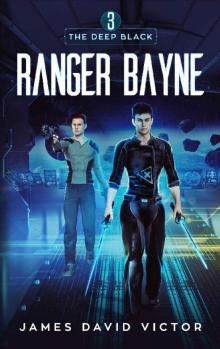 Ranger Bayne
Ranger Bayne Valyien Boxed Set 3
Valyien Boxed Set 3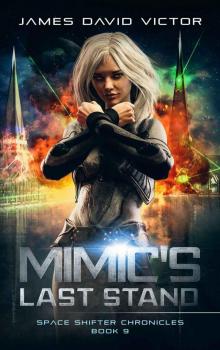 Mimic's Last Stand
Mimic's Last Stand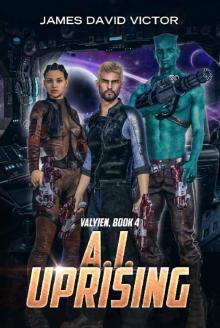 A. I. Uprising (Valyien Book 4)
A. I. Uprising (Valyien Book 4)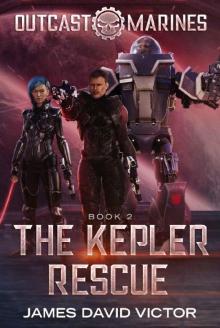 The Kepler Rescue
The Kepler Rescue Last Stand Boxed Set
Last Stand Boxed Set Challenge of Steel
Challenge of Steel Mimic Saves Her People
Mimic Saves Her People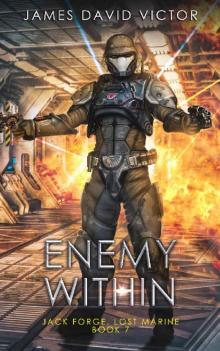 Enemy Within (Jack Forge, Lost Marine Book 7)
Enemy Within (Jack Forge, Lost Marine Book 7)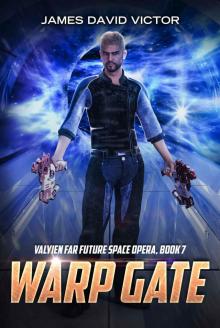 Warp Gate (Valyien Far Future Space Opera Book 7)
Warp Gate (Valyien Far Future Space Opera Book 7)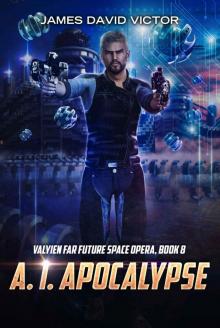 A. I. Apocalypse (Valyien Far Future Space Opera Book 8)
A. I. Apocalypse (Valyien Far Future Space Opera Book 8)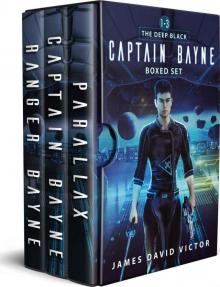 Captain Bayne Boxed Set
Captain Bayne Boxed Set Blue Star Marine Boxed Set
Blue Star Marine Boxed Set Night Raiders
Night Raiders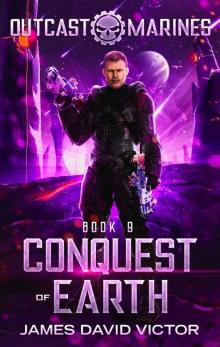 Conquest of Earth
Conquest of Earth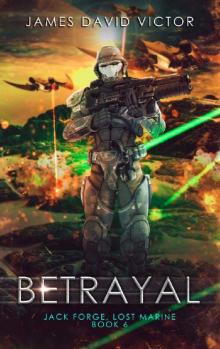 Betrayal (Jack Forge, Lost Marine Book 6)
Betrayal (Jack Forge, Lost Marine Book 6)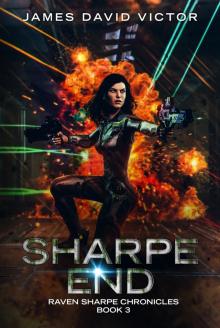 Sharpe End
Sharpe End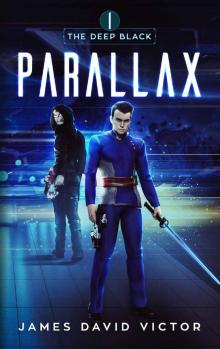 Parallax
Parallax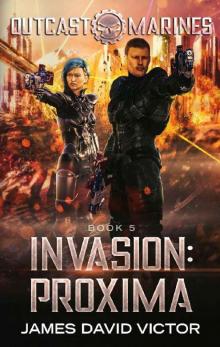 Invasion- Proxima
Invasion- Proxima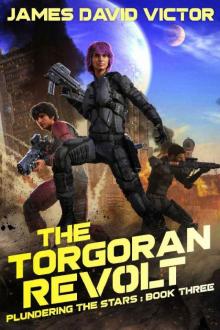 The Torgoran Revolt (Plundering the Stars Book 3)
The Torgoran Revolt (Plundering the Stars Book 3) Outcast Marines series Boxed Set 2
Outcast Marines series Boxed Set 2 Outcast Marines series Boxed Set
Outcast Marines series Boxed Set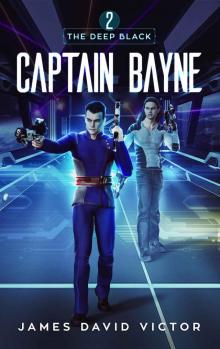 Captain Bayne
Captain Bayne Outcasts of Earth (Outcast Marines Book 1)
Outcasts of Earth (Outcast Marines Book 1)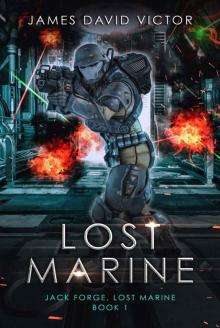 Lost Marine
Lost Marine Eternal Enemy
Eternal Enemy Command Code
Command Code Ranger Bayne (The Deep Black Book 3)
Ranger Bayne (The Deep Black Book 3) Mimic: The Space Shifter Chronicles Boxed Set (Books 1 - 9)
Mimic: The Space Shifter Chronicles Boxed Set (Books 1 - 9) The Deep Black Space Opera Boxed Set
The Deep Black Space Opera Boxed Set Federation at War (Blue Star Marines Book 1)
Federation at War (Blue Star Marines Book 1)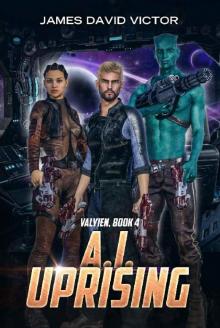 AI Uprising
AI Uprising The Xarren Escape (Plundering the Stars Book 2)
The Xarren Escape (Plundering the Stars Book 2) Valyien Boxed Set 1
Valyien Boxed Set 1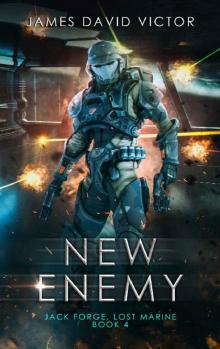 New Enemy (Jack Forge, Lost Marine Book 4)
New Enemy (Jack Forge, Lost Marine Book 4) Alien Legacy
Alien Legacy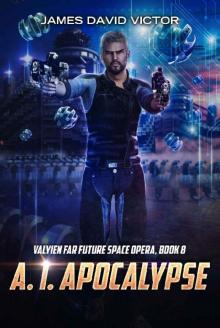 A I Apocalypse
A I Apocalypse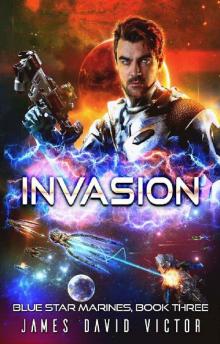 Invasion (Blue Star Marines Book 3)
Invasion (Blue Star Marines Book 3)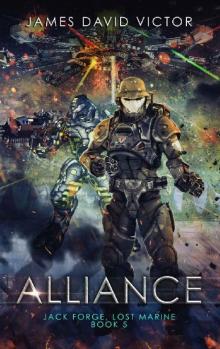 Alliance (Jack Forge, Lost Marine Book 5)
Alliance (Jack Forge, Lost Marine Book 5) Double Sharpe (Raven Sharpe Chronicles Book 2)
Double Sharpe (Raven Sharpe Chronicles Book 2) Metal Warrior: Steel Cage (Mech Fighter Book 6)
Metal Warrior: Steel Cage (Mech Fighter Book 6)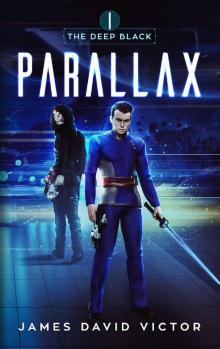 Parallax (The Deep Black Book 1)
Parallax (The Deep Black Book 1)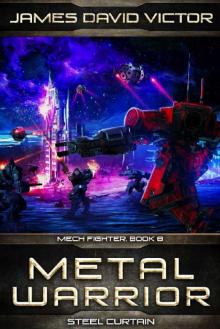 Metal Warrior: Steel Curtain (Mech Fighter Book 8)
Metal Warrior: Steel Curtain (Mech Fighter Book 8)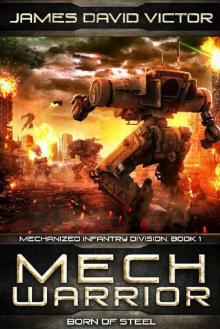 Mech Warrior: Born of Steel (Mechanized Infantry Division Book 1)
Mech Warrior: Born of Steel (Mechanized Infantry Division Book 1) Outcast Marines Boxed Set
Outcast Marines Boxed Set Metal Warrior: Ring of Steel (Mech Fighter Book 7)
Metal Warrior: Ring of Steel (Mech Fighter Book 7) The Elarri Heist (Plundering the Stars Book 1)
The Elarri Heist (Plundering the Stars Book 1)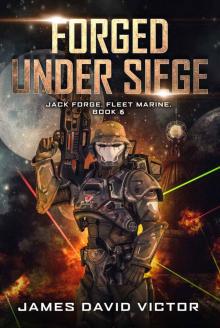 Forged Under Siege (Jack Forge, Fleet Marine Book 6)
Forged Under Siege (Jack Forge, Fleet Marine Book 6)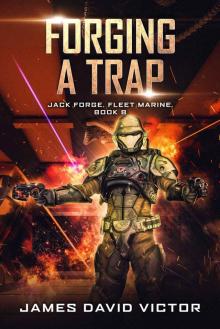 Forging a Trap (Jack Forge, Fleet Marine Book 8)
Forging a Trap (Jack Forge, Fleet Marine Book 8) Daikon (ESS Space Marines Book 2)
Daikon (ESS Space Marines Book 2)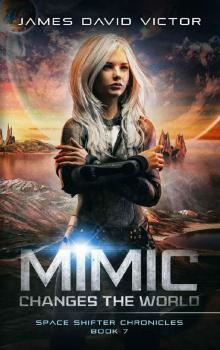 Mimic Changes the World
Mimic Changes the World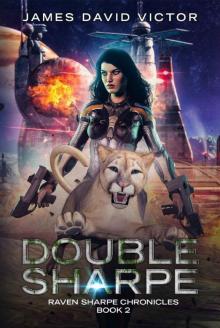 Double Sharpe
Double Sharpe Invasion- Pluto
Invasion- Pluto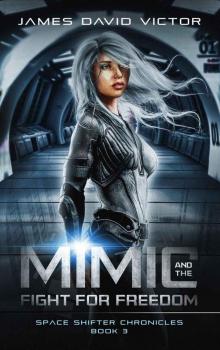 Mimic and the Fight for Freedom (Space Shifter Chronicles Book 3)
Mimic and the Fight for Freedom (Space Shifter Chronicles Book 3)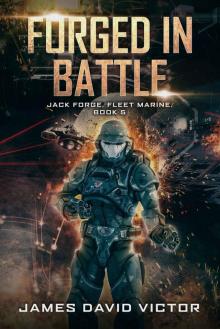 Forged in Battle (Jack Forge, Fleet Marine Book 5)
Forged in Battle (Jack Forge, Fleet Marine Book 5) Lykos (ESS Space Marines Book 6)
Lykos (ESS Space Marines Book 6) Metal Warrior: Precious Metal (Mech Fighter Book 5)
Metal Warrior: Precious Metal (Mech Fighter Book 5)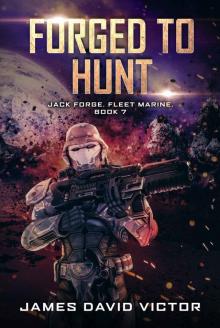 Forged to Hunt
Forged to Hunt Earth Space Service Space Marines Boxed Set
Earth Space Service Space Marines Boxed Set Alpha Rises
Alpha Rises Power of the Seers (Dragon Oracle Book 4)
Power of the Seers (Dragon Oracle Book 4)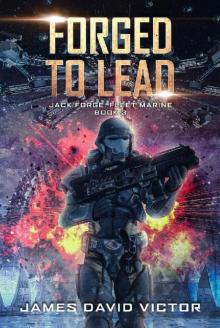 Forged to Lead (Jack Forge, Fleet Marine Book 3)
Forged to Lead (Jack Forge, Fleet Marine Book 3) Nebula (ESS Space Marines Book 4)
Nebula (ESS Space Marines Book 4)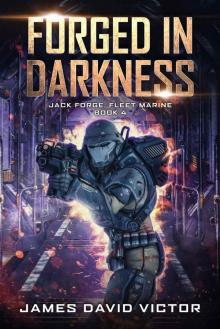 Forged in Darkness
Forged in Darkness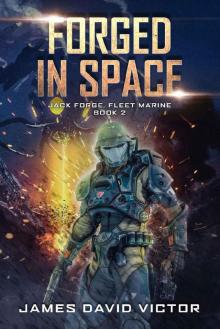 Forged in Space
Forged in Space Metal Warrior: Steel Trap (Mech Fighter Book 3)
Metal Warrior: Steel Trap (Mech Fighter Book 3) Mimic and the Space Engineer Boxed Set, Books 1 - 3
Mimic and the Space Engineer Boxed Set, Books 1 - 3 World Breaker Boxed Set (ESS Space Marines Omnibus Book 3)
World Breaker Boxed Set (ESS Space Marines Omnibus Book 3) Forged to Lead
Forged to Lead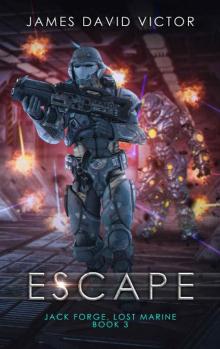 Escape (Jack Forge, Lost Marine Book 3)
Escape (Jack Forge, Lost Marine Book 3)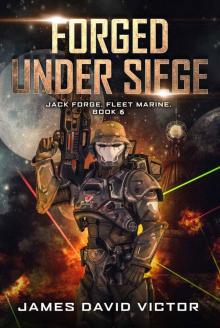 Forged Under Siege
Forged Under Siege Jack Forge, Fleet Marine Boxed Set (Books 1 - 9)
Jack Forge, Fleet Marine Boxed Set (Books 1 - 9)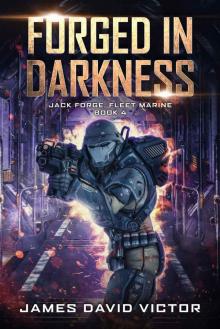 Forged in Darkness (Jack Forge, Fleet Marine Book 4)
Forged in Darkness (Jack Forge, Fleet Marine Book 4)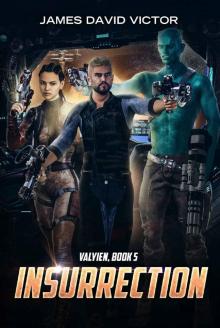 Insurrection
Insurrection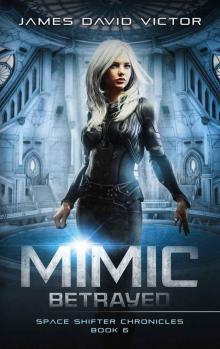 Mimic Betrayed (Space Shifter Chronicles Book 6)
Mimic Betrayed (Space Shifter Chronicles Book 6) Mimic Goes to War (Space Shifter Chronicles Book 5)
Mimic Goes to War (Space Shifter Chronicles Book 5)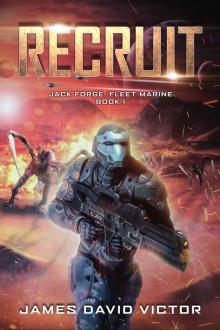 Recruit (Jack Forge, Fleet Marine Book 1)
Recruit (Jack Forge, Fleet Marine Book 1)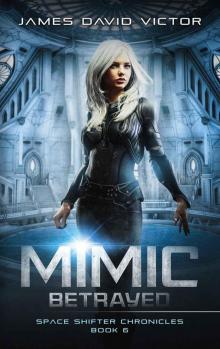 Mimic Betrayed
Mimic Betrayed Power of the Seers
Power of the Seers Mimic and the Journey Home (Space Shifter Chronicles Book 2)
Mimic and the Journey Home (Space Shifter Chronicles Book 2)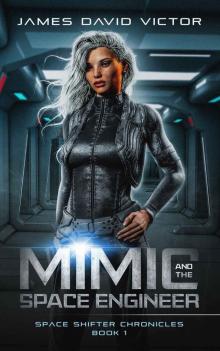 Mimic and the Space Engineer (Space Shifter Chronicles Book 1)
Mimic and the Space Engineer (Space Shifter Chronicles Book 1)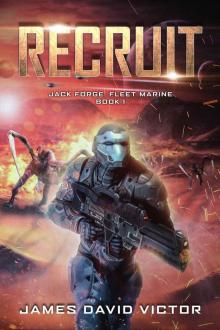 Recruit
Recruit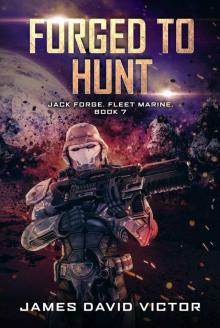 Forged to Hunt (Jack Forge, Fleet Marine Book 7)
Forged to Hunt (Jack Forge, Fleet Marine Book 7) Forged by War (Jack Forge, Fleet Marine Book 9)
Forged by War (Jack Forge, Fleet Marine Book 9) Pursuit (Silver Cane Book 1)
Pursuit (Silver Cane Book 1) Zenith (ESS Space Marines Book 1)
Zenith (ESS Space Marines Book 1) Star Chaser (ESS Space Marines Book 3)
Star Chaser (ESS Space Marines Book 3)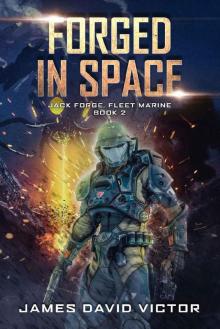 Forged in Space (Jack Forge, Fleet Marine Book 2)
Forged in Space (Jack Forge, Fleet Marine Book 2)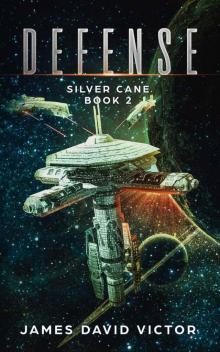 Defense (Silver Cane Book 2)
Defense (Silver Cane Book 2) Infiltrate (Silver Cane Chronicles Book 3)
Infiltrate (Silver Cane Chronicles Book 3) Alpha Rises (Valyien Book 2)
Alpha Rises (Valyien Book 2) Mimic Raises an Army
Mimic Raises an Army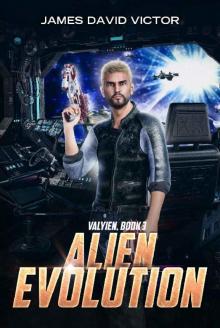 Alien Evolution (Valyien Book 3)
Alien Evolution (Valyien Book 3) Arkana (ESS Space Marines Book 4)
Arkana (ESS Space Marines Book 4) Lykos
Lykos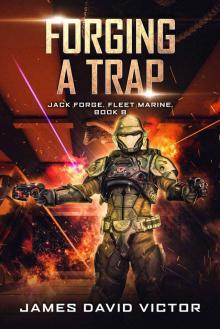 Forging a Trap
Forging a Trap Mimic Goes to War
Mimic Goes to War Earth Space Service Boxed Set: Books 1 - 3 (ESS Space Marines Omnibus)
Earth Space Service Boxed Set: Books 1 - 3 (ESS Space Marines Omnibus) Stranded (ESS Space Marines Book 7)
Stranded (ESS Space Marines Book 7) Mimic Raises an Army (Space Shifter Chronicles Book 4)
Mimic Raises an Army (Space Shifter Chronicles Book 4)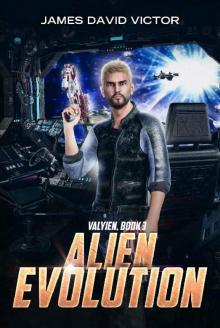 Alien Evolution
Alien Evolution